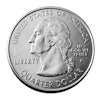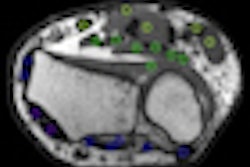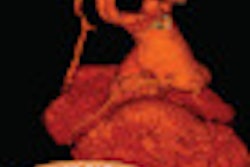Italian radiologists reviewing CT and MR images on smartphones were as accurate as those reading images from PACS workstations, a new study shows. But reading from smartphones produced greater eye strain, indicating that the devices are probably best used for consulting rather than primary interpretation.
The results suggest that smartphones could be useful for teleradiology applications, such as enabling more experienced radiologists who don't have a PACS workstation at hand to provide second opinions to less experienced colleagues, according to a research team led by Floriana Zennaro, MD, from the Institute for Maternal and Child Health IRCCS "Burlo Garofolo" in Trieste. She presented the research during a scientific session at the 2010 RSNA meeting in Chicago.
Over the past three years, the institute has been using a teleradiology system by which 50% of medical images are reported from home by on-call physicians. All radiologists have access to the RIS/PACS at home, with exactly the same interface used at work, according to Zennaro.
Recently, the teleradiology system was expanded to offer second opinions for young pediatric radiologists in training when they have doubts regarding an interpretation, Zennaro said. In addition, e-consultation is now being provided for nonpediatric radiologists in their regional health system when they are having a pediatric imaging interpretation problem. Also, a link has been established with Luanda Children's Hospital in Angola to provide pediatric radiology telecounseling, Zennaro said.
All of these situations require radiologists to be either at the hospital or at home. But what if cases could be sent to them for review on smartphones? Zennaro and colleagues sought to test this hypothesis by comparing the interpretation accuracy of radiologists reading off smartphones with their performance on a standard PACS workstation.
For the study, the researchers randomly selected CT and MRI exams performed in their department in the past two years. CT and MRI were used because of their relatively low display matrix size -- usually lower than that of smartphones, Zennaro said.
Anonymized exams were sent to smartphones using an encrypted connection over a virtual private network (VPN), and they were reported independently in a blinded fashion by two senior radiologists. Two different smartphones were used: an iPhone with OsiriX DICOM display software (version 1.14) and a Nexus One Android-based phone with an alpha version of DicomDroid display software (version 0.2).
The results were collected and compared with the reports from the original exam on the institution's PACS, which served as the gold standard for the study. One slice from each exam was chosen by the PACS radiologist to be submitted to the smartphone.
Of the 24 CT exams, results from the smartphone matched the PACS in 22 cases, with a partial matching found in two cases. Sixty-eight of the 69 MRI reports matched, with a partial match in one case. Overall, interpretations of 90 of the 93 CT and MRI exams matched.
Additional findings on the smartphones led to the partial matches; interestingly, radiologists tended to search images more intensely on the smartphones, according to Zennaro said.
"We found more [pathology] with [the smartphones] than on PACS," she said. "This is exactly the contrary to what we had expected."
Although the study is still ongoing, no significant loss of information has been detected so far from the use of smartphones. "No major differences [have been found between the two systems]," she said. "Differences were mostly due to personal interpretation rather than to device inadequacy."
The most challenging exams were CT abdominal studies because of their high number of slices, she said. MRI was the easiest due to the low number of slices and matrix size.
On the downside, radiologists have reported eye fatigue after long sessions, which confirms that while smartphones are suitable for consultation, they aren't appropriate for primary interpretation, Zennaro said.
Ultimately, tablet PCs could be the right compromise between PACS workstations at home and smartphones, Zennaro said.
In the second part of the study, the researchers plan to evaluate interpretation accuracy on tablet computers, including Apple's iPad and Samsung's Galaxy. At least 300 images will be studied, according to Zennaro.
By Erik L. Ridley
AuntMinnie.com staff writer
January 19, 2011
Related Reading
iPad may be best suited for nondiagnostic role, January 17, 2011
iPad holds up well for assessing tuberculosis, November 29, 2010
iPhone can aid in triage of head injury patients, November 19, 2010
Is the iPad radiology's dream device for mobile healthcare? June 24, 2010
FDA action may rain on iPhone's medical imaging parade, March 23, 2010
Copyright © 2011 AuntMinnie.com



















